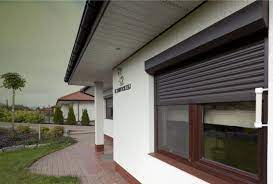
Artisanal PVC: Crafting Unique Carpentry Pieces
PVC, or polyvinyl chloride, is a flexible materials renowned for its sturdiness and overall flexibility in different programs, which includes carpentry. PVC carpentry involves employing PVC-structured supplies to create doors, home windows, units, along with other furnishings. Here’s all you should understand about PVC carpentry (tamplarie pvc):
1. Longevity: Among the principal benefits of PVC carpentry is its extraordinary sturdiness. PVC resources are proof against rot, rust, and bug harm, causing them to be well suited for exterior apps along with higher-moisture content situations like restrooms and kitchens.
2. Lower Upkeep: Unlike wooden, PVC requires little routine maintenance. It can not have piece of art or sealing to maintain its physical appearance and dependability. Just cleaning it with soapy water periodically is generally sufficient to maintain it looking new for a long time.
3. Overall flexibility: PVC could be shaped and shaped into a variety of information, making it possible for a wide array of style opportunities. Whether you like a regular or modern aesthetic, PVC carpentry can support your personal style choices.
4. Charge-Performance: Although PVC goods could have a higher upfront price compared to some conventional supplies like hardwood, their long-term sturdiness and lower servicing requirements often result in cost savings over time. Moreover, PVC’s potential to deal with enviromentally friendly factors may help lessen replacing and maintenance charges.
5. Enviromentally friendly Concerns: PVC is a synthetic plastic-type material, which increases problems about its ecological impact. Nonetheless, PVC carpentry may be eco-friendly when created responsibly and reprocessed after its lifespan. Many companies offer you PVC products produced from reused materials and encourage recycling projects.
6. Installing: PVC carpentry (tamplarie pvc) is typically lightweight and easy to install, rendering it a preferred option for DIY enthusiasts and specialist carpenters likewise. Even so, accurate sizes and suitable tactics continue to be important for a successful set up.
7. Energy Efficiency: PVC resources provide exceptional thermal insulating material qualities, helping to regulate indoors conditions and enhance energy productivity. This can lead to lessened heating and air conditioning charges after a while, generating PVC carpentry a practical choice for electricity-sensitive property owners.
8. Colour Options: PVC carpentry goods are readily available in many different shades and coatings, letting you customize any project to fit your home’s aesthetic. From timeless white-colored to timber grain designs, there’s a PVC choice to suit every type choice.
To conclude, PVC carpentry delivers several positive aspects, such as sturdiness, lower servicing, flexibility, as well as efficiency. By being familiar with these key factors, homeowners can make educated choices about incorporating PVC materials to their carpentry jobs.